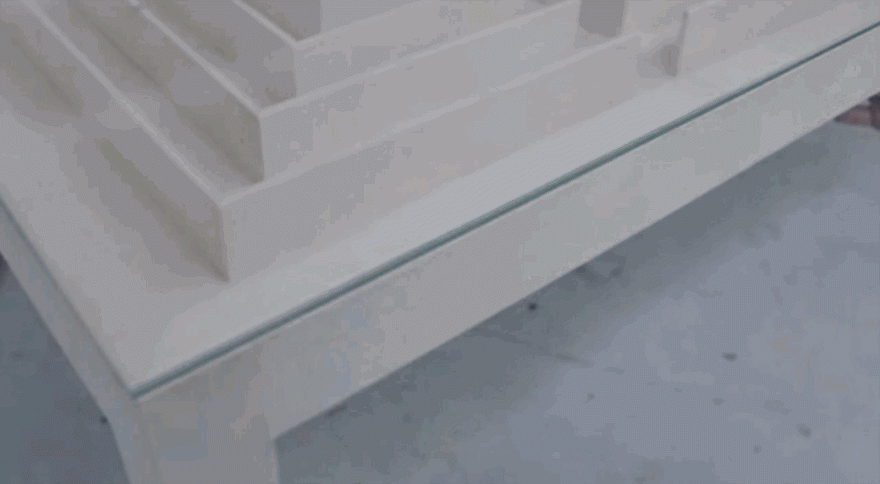Benjamin Nordsmark’s Labyrinth Table is not Kramer’s coffee table book about coffee tables—sadly, nothing ever will be—but it’s pretty damn cool nonetheless.
“The Labyrinth Table,” writes Nordsmark, “was created to show how a well-known object like a table can be given an extra dimension by creating a small universe inside of it.” In this case, the universe is a labyrinth housed beneath the table’s glass top. Rendered in maple, like the rest of the table, the labyrinth houses (or, depending on your interpretation, imprisons) six metal figurines. Those figurines, which are reminiscent of toy soldiers, can be moved about using magnets underneath the table. The Labyrinth Table is therefore more than a piece of furniture or a sculpture; it is a game.
Nordsmark’s table has something of an inner life. In that respect, it brings to mind the original Toy Story, which saw toys—including Labyrinth Table-esque toy soldiers—move through a home in ways its architect could not have imagined. At a macro-scale, this is what BLDGBLOG’s Geoff Manaugh calls Nakatomi Space: “buildings reveal near-infinite interiors, capable of being traversed through all manner of non-architectural means.” The route from one end of a table to the other is rarely through its inner structure, but in Nordsmark’s case, it is.
The idea of the Labyrinth Table, then, is subversive. It takes our idea of what a coffee table is and how it should function and corrupts it at every turn. It is not a surface; it has depth. It is not a container; it is an ecosystem. It is not a boring piece of furniture on which you rest your feet, even if you have repeatedly been told to do otherwise; it is a game, and a fun one at that.
